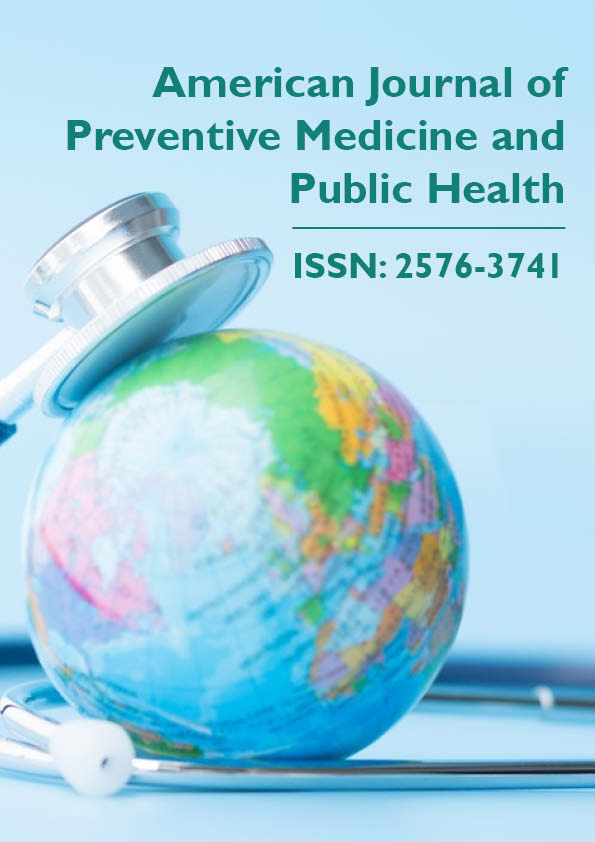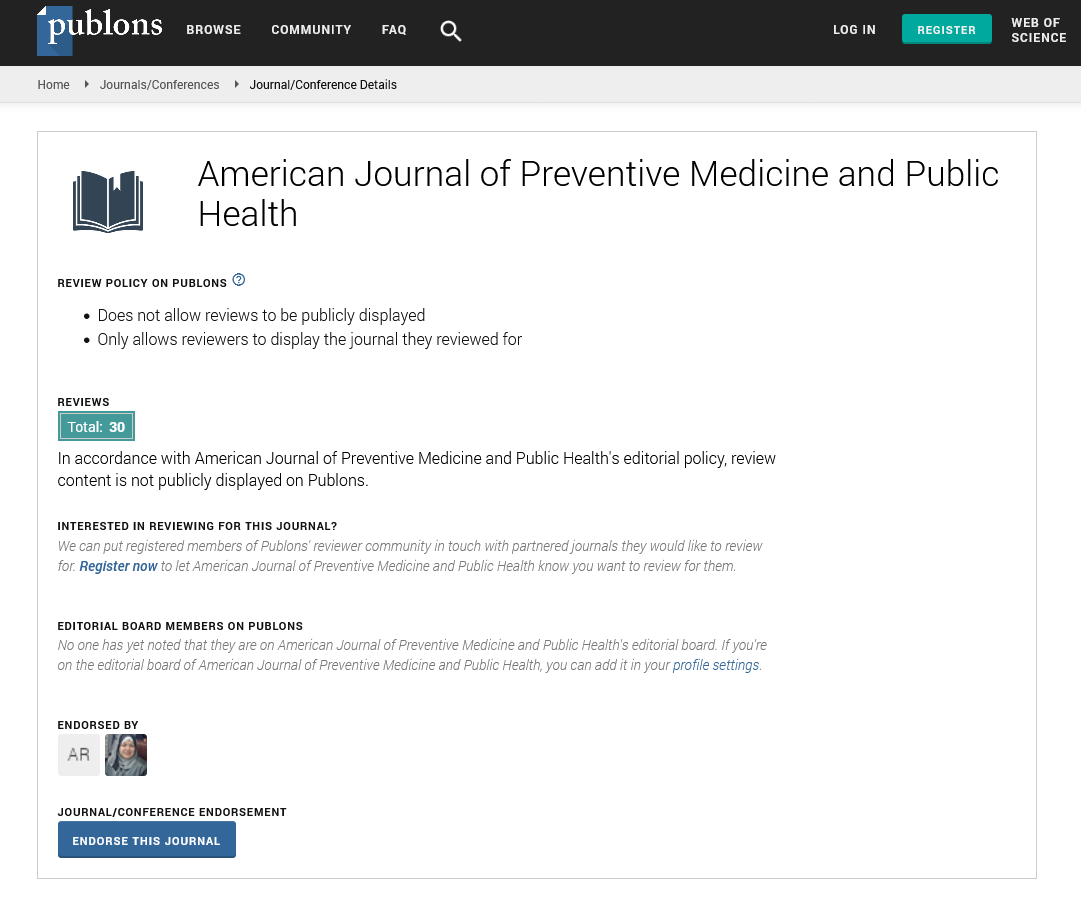Commentary - American Journal of Preventive Medicine and Public Health (2022)
Practical Measures to Stop the Spread of Infectious Diseases
Marjan Wouthuyzen‐Bakker*Marjan Wouthuyzen‐Bakker, Department of Medical Microbiology and Infection Prevention, University of Groningen, Groningen, The Netherlands, Email: wouthuyzen-bakker23@gmail.com
Received: 19-Jul-2022, Manuscript No. AJPMPH-22-73522; Editor assigned: 21-Jul-2022, Pre QC No. AJPMPH-22-73522 (PQ); Reviewed: 05-Aug-2022, QC No. AJPMPH-22-73522; Revised: 10-Aug-2022, Manuscript No. AJPMPH-22-73522 (R); Published: 17-Aug-2022
Description
The invasion of tissues by pathogens, their growth, and the host tissues’ response to the infectious agent and the toxins they release are all considered infections. A sickness brought on by an infection is referred to as an infectious disease, often known as a transmissible disease or communicable disease. There are many different pathogens that can cause infections, but bacteria and viruses are the most common ones. Hosts’ immune systems can help those combat infections. Mammalian hosts respond to infections by first going through an innate response, which frequently involves inflammation, and then going through an adaptive response.
Prevention
Infections can be prevented from spreading by using methods including hand washing, dressing in gowns, and donning face masks. The best line of defence against the spread of harmful pathogens continues to be frequent hand washing. Other methods of prevention include abstaining from using illegal substances, using condoms, wearing gloves, and leading a healthy lifestyle that includes a balanced diet and frequent exercise. Food preparation is essential, as is avoiding foods that have been exposed to the elements for an extended period of time.
The following antimicrobial agents are used to stop the spread of infections:
• Applying antiseptics to skin or live tissue.
• Disinfectants that eliminate microorganisms that is present on non-living things.
• When taken as infection prevention rather than infection treatment, antibiotics are referred to as prophylactic. Antibiotic use for a lengthy period of time, however, causes bacterial resistance. While bacteria develop immunity to antibiotics, people do not. In order to avoid bacteria developing mutations
that contribute to antibiotic resistance, avoid using antibiotics for longer than is absolutely necessary.
Understanding the varied traits of various diseases is one of the strategies to stop or delay the spread of infectious diseases. Virulence, travel distance of individuals affected, and contagiousness level are a few crucial illness features that need to be assessed. For instance, the human strains of the Ebola virus rapidly render the infected unconscious and then kill them. As a result, persons who have this illness are unable to venture very far from the site of initial infection. Additionally, the virus must propagate through sores on the skin or porous membranes like the eye. Ebola’s early stages are therefore not extremely contagious because its victims only suffer internal bleeding.
Due to the aforementioned characteristics, Ebola spreads quickly and typically stays inside a small geographic area. The Human Immunodeficiency Virus (HIV), in contrast, progressively kills its victims by destroying their immune systems. Because of this, many of its patients spread the illness to other people without even being aware that they are sick. Additionally, the low virulence makes it possible for patients to travel large distances, increasing the chance of an epidemic.
Recognizing the consequences of small-world networks is another successful strategy for reducing the incidence of infectious disease transmission. In epidemics, discrete hubs of vulnerable people frequently contact with one another and there are frequently substantial interactions within hubs or groups of infected people. The disease can jump and propagate in a susceptible hub via a few or few interactions with an infected hub, despite the limited interaction between discrete hubs. Therefore, if interactions between people within infected hubs are avoided, infection rates in small-world networks can be somewhat decreased. However, if the primary goal is the avoidance of transmission jumps across hubs, infection rates can be significantly decreased. One successful application of this treatment strategy is the use of needle exchange programmers in regions with a high concentration of HIV-positive drug users.
Until the disease presents itself or the person remains healthy, individuals may be isolated in situations when infection is just suspected. To stop an infection from spreading outside of a community, groups may be placed under quarantine, or in the case of communities, a cordon sanitaire may be implemented. In the case of protective sequestration, a community may also be placed under quarantine. Other social isolation strategies, such closing schools, may be used by public health officials to contain an outbreak.
Copyright: © 2022 The Authors. This is an open access article under the terms of the Creative Commons Attribution NonCommercial ShareAlike 4.0 (https://creativecommons.org/licenses/by-nc-sa/4.0/). This is an open access article distributed under the terms of the Creative Commons Attribution License, which permits unrestricted use, distribution, and reproduction in any medium, provided the original work is properly cited.







